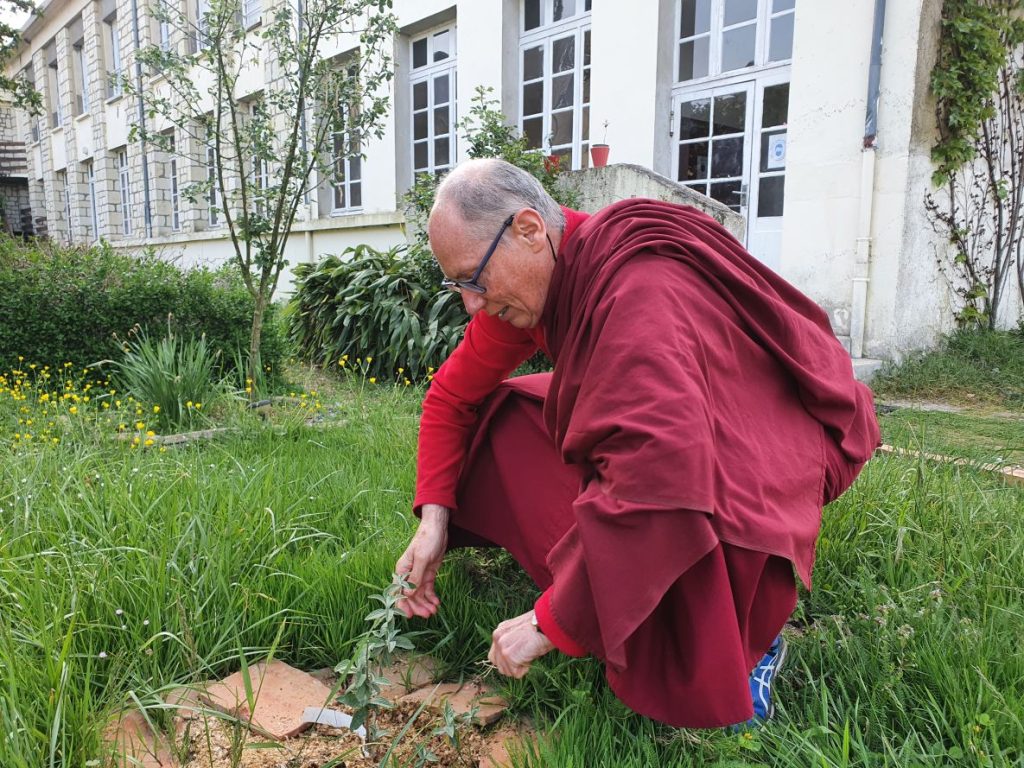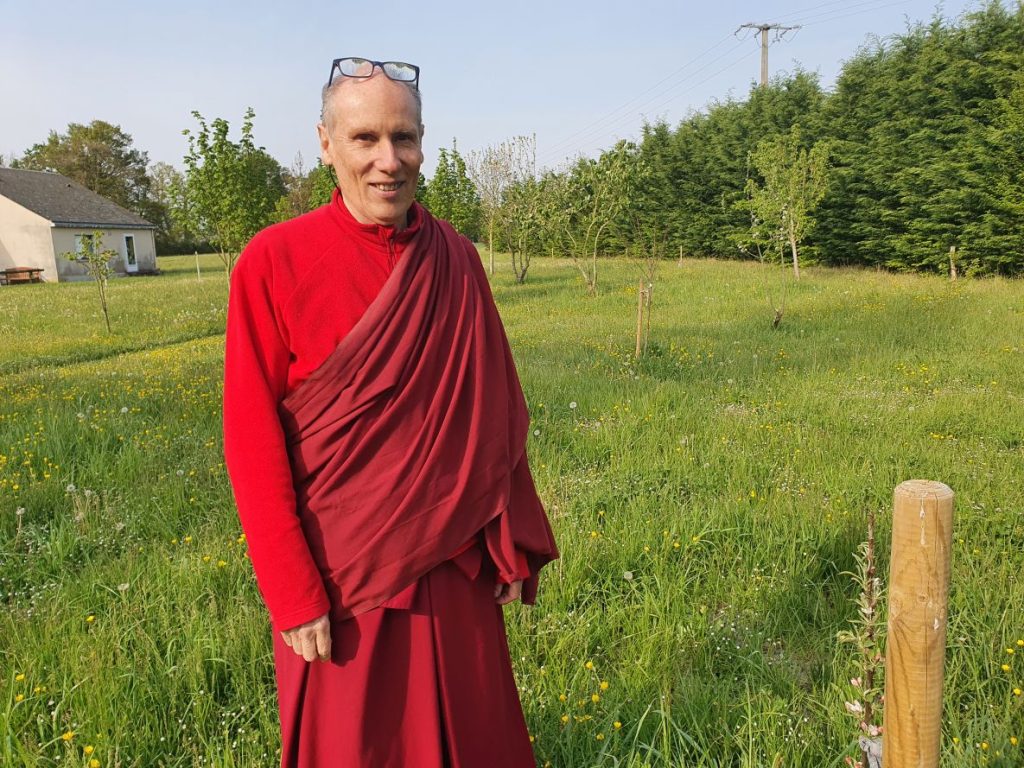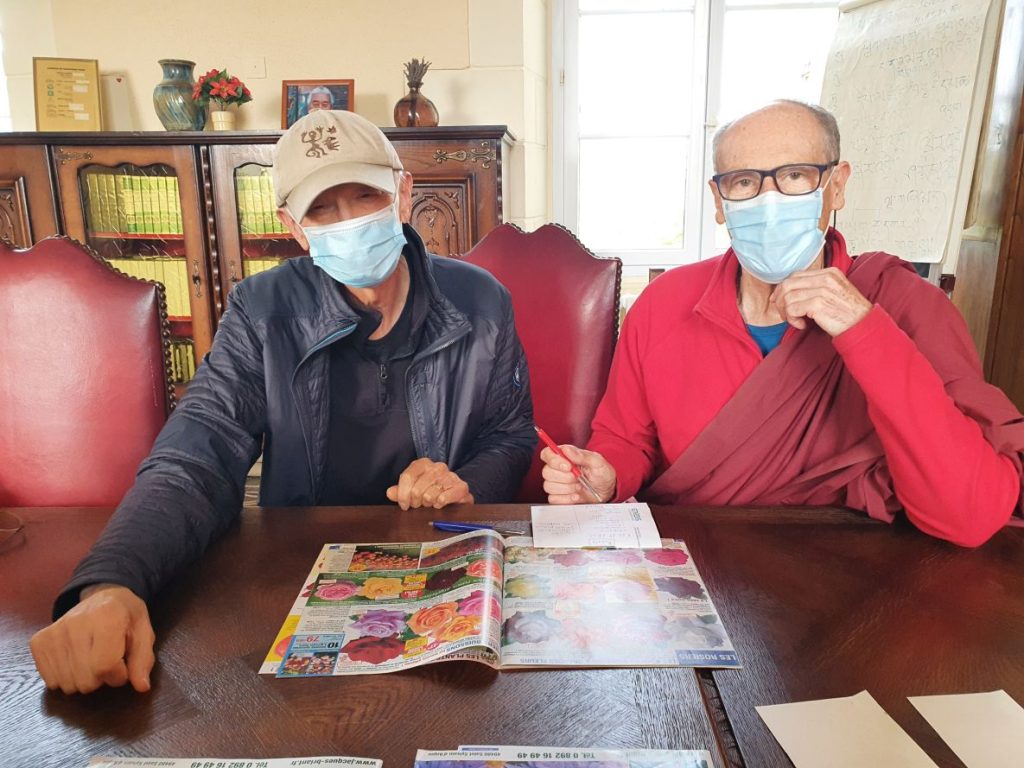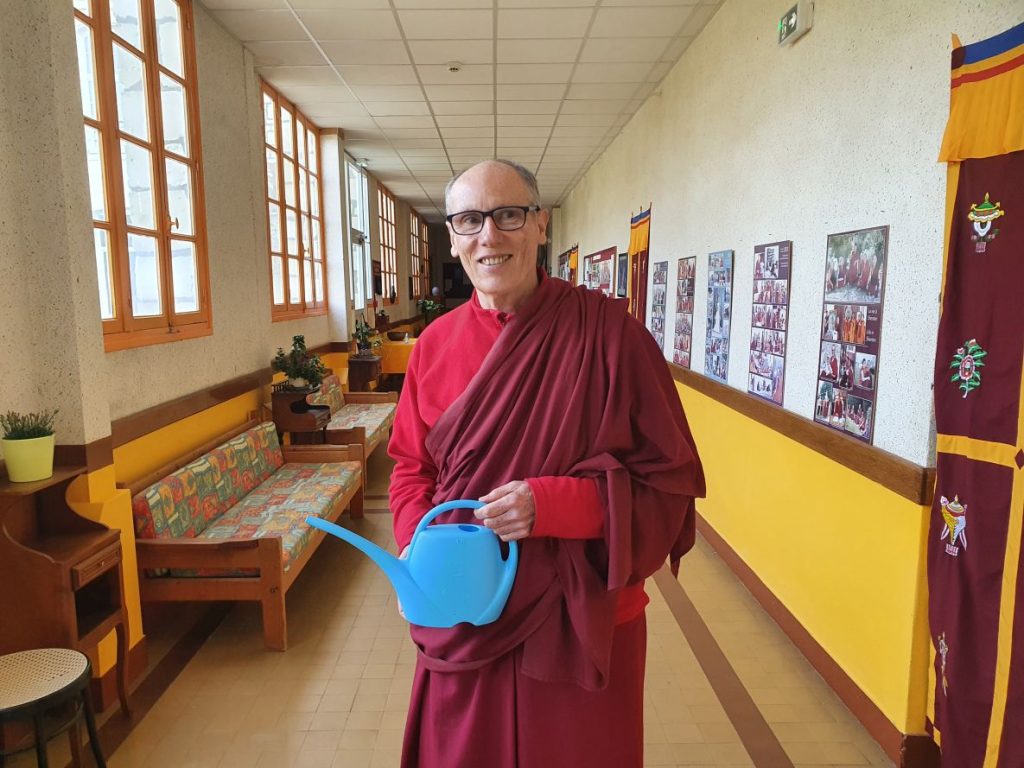Yungdrung Dargye: Taking care of Shenten´s green is not always easy

Yungdrung Dargye – Guillaume Lassalle took us for a walk around the area of Shenten and talked to us about its various flora. “I am very fond of all kinds of plants, medicinal plants, fruit trees, vegetables, whatever. In my family, we all like plants very much, and since I was a child, I learned about them. I also studied agriculture. Here at Shenten, this knowledge can be useful,” he says.
Shenten is a very large property and taking care of all its green space is not always easy. We do what we can, for now, but we can do even better! Plants provide us with food and they can decorate our environment, including our temples. So instead of buying flowers for pujas, we can decide which plants we want to cultivate, choose the healthy ones, those with long lasting perfume, and use them in our interior spaces at Shenten.
Let’s start with the area which is behind the dining hall. We have tried to build a vegetable garden there. Next to it, we planted a small vineyard; about five years ago. It is a special ancient French variety of grapes, very perfumed and with a fine taste. This year, we built supports for the vines which will give them a good exposure to the sun.
Next to the vegetable garden, there is an orchard. I planted most of its fruit trees. There are several different varieties: plum, apricot, cherry, and apple trees. Before there were peach trees but many of them died. Grass competes with the roots of the trees, and peach trees are a bit too weak, they do not live long and can die easily, so they did not survive the competition. Three or four died.
This year, we pruned half of the fruit trees in this orchard, so more sunlight can easily reach the inside branches of the trees. We will do the rest next year. I hope the fruits are not destroyed by the early frost this year as has happened in the past year. At least the cherries should be safe, as they blossomed after the big frost that we had this spring.
Continuing our walk, you can see that we planted some fruit trees recently next to the pigeonerie and we have also saved some of the very old rose bushes on this side of the chateau.
Now we are entering the allée of the lime trees – which is part of the cora around Shenten. You can see that the crowns of these trees are not as full as before, as we were required to cut some of their branches due to electric wires with internet cables passing too close to them. However, the branches will be back again, within two years, as they grow quite fast. I hope the trees will all survive and in good health this big intervention. It could not be avoided, we must obey the law.
The big sequoia, the tree which one can see from a distance when arriving at Shenten and which everyone who has been here knows, is around one hundred fifty years old. It was once struck by lightning, about twenty years ago or so, and its crown burnt at that time. Otherwise, it would have been even more impressive than now. We all love this majestic and noble tree.

Lime trees form also the central allée which unites the parking lot and the entrance to Shenten. In the spring these trees all have green sprouts which are edible. You can try! It is like lettuce salad!
Next to the parking lot and along the cora you pass by bushes of lilacs. They have had some difficulties growing there because of many stones in the ground – the same stones that were used to build the chateau. Perhaps, originally, there were the walls protecting the castle. It was difficult to dig holes to plant the lilacs there and also for their roots to make their way through stones. I have to help them to grow, with some natural fertilizers like dead leaves, or lawn mowing clippings and sometimes even nettles.
In the space between lama’s wing of the chateau and the parking place, on the right side from the central allée, we have chestnut trees and walnut trees. We have more walnut trees on the other side of Shenten, near pigeonerie. Those have even better exposure to the sunlight. Yongdzin Rinpoche used to crack walnuts from these trees, in the afternoons, while sitting on his white bench next to the laundry.
Located between the new stupa and Rinpoche´s room, there is a tree that Yongdzin Rinpoche planted, a ginkgo biloba. Ginkgo biloba is a survivor; plants of its species lived on the earth hundreds of millions of years ago.
On the walls of the lama’s wing of the castle, also facing the new stupa, there are white roses with a very nice perfume. They blossom even in the shadows, which is why they were planted on the northern side of the building.
Next to the pavillon, on the right side of the road that goes from the parking lot to the hearth, we have another orchard. Here, we planted around twenty trees, quite recently, Christophe and me. We will have mirabelles, apples, apricots, peaches, pears from those trees.
We also have many aromatic plants at Shenten: fennel, salvia, rosemary, lavender, along with many flowers.
People bought flower plants earlier this year for Shenten and gave them as offerings: Lowell, Huguette, Alexandra, and others. Khenpo Gelek planted many flower plants along with other Shenten lamas who helped him.

We also have many juniper and cypress trees at Shenten. We cut and burn their branches in the hearth, at the daily morning sang offerings. These trees need to be shaped anyway.
Anyone who has been to Shenten knows there is also a palm, in a quite central place, between the two wings of the castle. The school that earlier owned the Shenten property encouraged gardening and their students planted this palm. It was very small when we arrived here but it has now grown quite large. It is a resistant variety of palm, which can survive in the frost, up to minus fifteen degrees.
In the small gardens, quite close to the palm tree and next to the laundry, dahlia flowers used to grow. These flowers were much loved by Yongdzin Rinpoche. Now there are not so many, but we will plant them again. During the pandemic, the gardens had less care than needed, as it was difficult to keep up on the usual maintenance. But now we are getting back to normal, with our joint efforts.

photos: Jitka Polanska